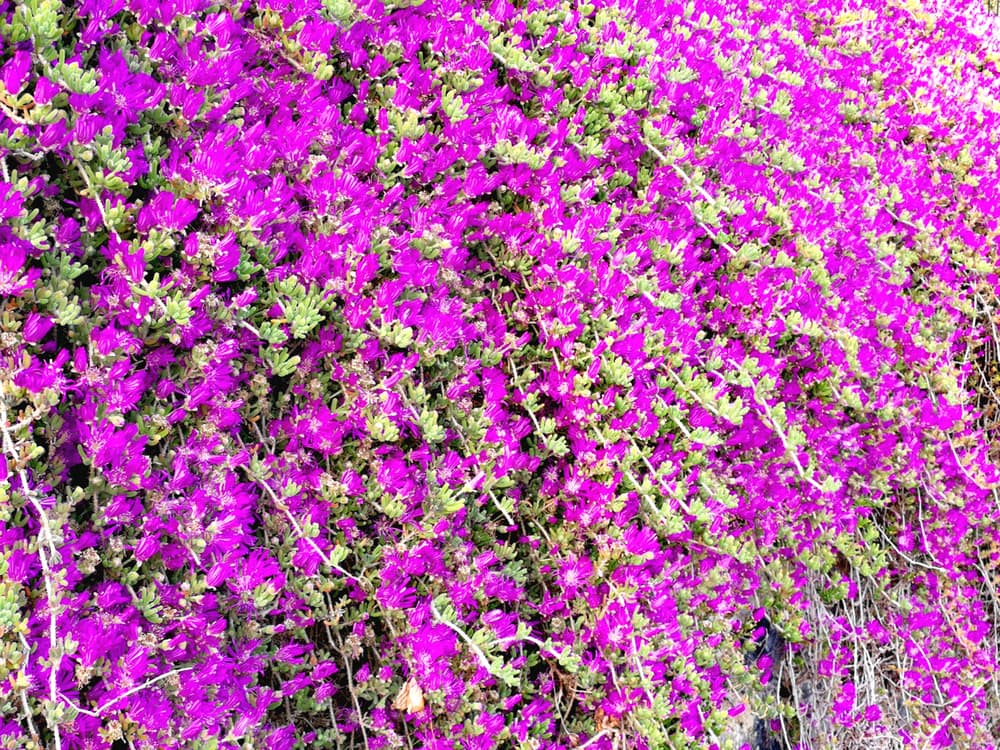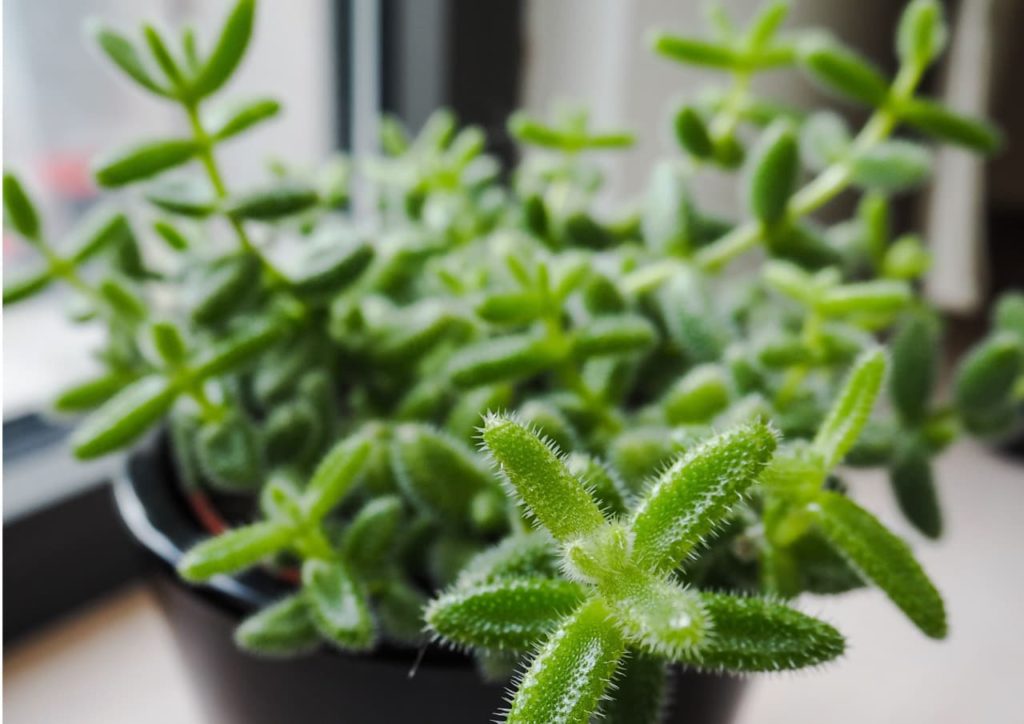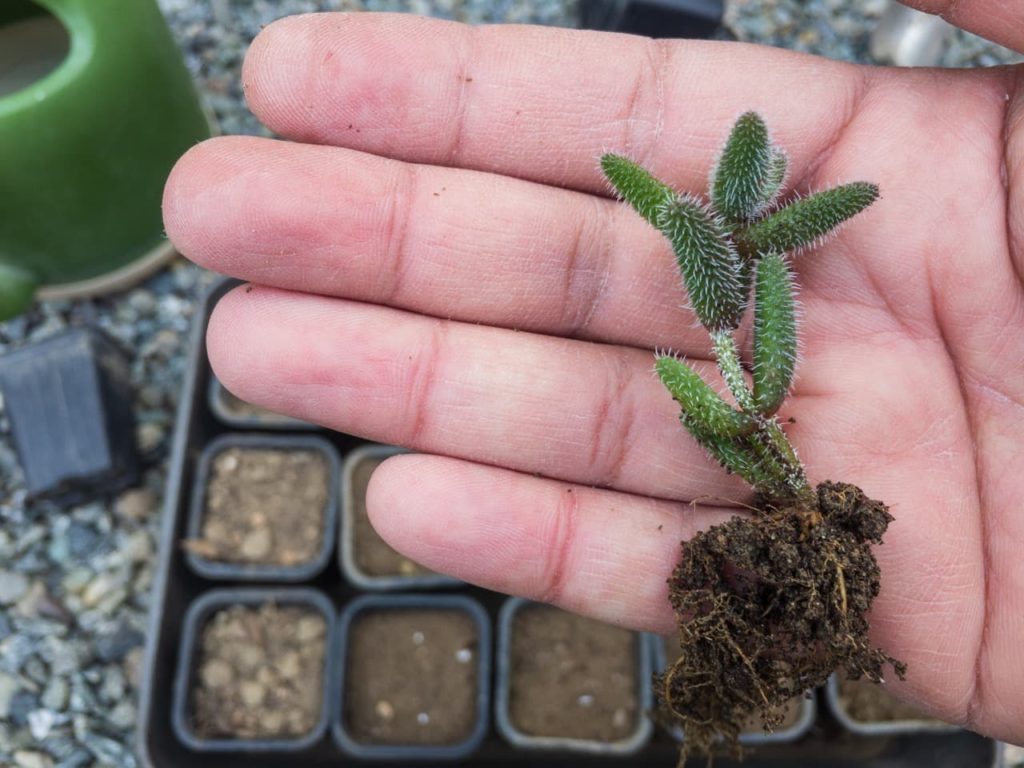Delosperma Growing Advice From The Experts – ‘They Require Little Care Once Established’

SUCCULENTS > DELOSPERMA

Elizabeth is a Permaculture Garden Designer, Sustainability Consultant and Professional Writer, working as an advocate for positive change. She graduated from the University of St. Andrews with an MA in English and Philosophy and obtained a Diploma in Applied Permaculture Design from the Permaculture Association.
Reviewed By PETER LICKORISH

Peter is a Horticulture Lecturer and self-employed Horticulturist, with a passion for diverse areas of the industry - from garden design to the science behind plant growth and propagation. He has completed the Royal Horticultural Society’s Master of Horticulture (MHort) Award and lectures on RHS courses at Bedford College.
Contributions From NIAMH MULLALLY

With over 20 years of experience in horticulture, Niamh is the owner of Southwold Succulent Co, based in Suffolk, UK. Niamh has a large following on Instagram, where she shares other plants that she grows in her garden, as well as the succulents she is so fond of.

Peter is the Society Secretary and representative of the BCSS. Peter has a massive 68 years of experience growing cacti and succulents. He has written and published academic articles about these plants, appearing in BCSS’ Cactus World, and can be found in some of the videos on the society’s YouTube account, sharing his Manchester-based collection.
IN THIS GUIDE
DELOSPERMA GUIDES
Delospermas, also known as ‘ice plants’, are grown as garden plants or in a greenhouse in the UK.
There are 170 different species within this genus, some of which are attractive ornamental plants for gardens or for growing under cover.1Delosperma. (n.d.). Kew Royal Botanic Gardens. Retrieved April 12, 2023, from https://powo.science.kew.org/taxon/urn:lsid:ipni.org:names:30416604-2#children
“I love growing Delospermas because of the annual food they provide for our pollinators,” shares Niamh Mullally from Southwold Succulent Co.
“They can survive droughts and require little care from us once established.”
Overview
| Botanical Name | Delosperma |
| Common Name(s) | Ice Plant |
| Plant Type | Perennial Succulent |
| Native Area | East and South Africa |
| Hardiness Rating | H1B to H6 |
| Foliage | Evergreen |
| Flowers | Varies |
| When To Plant | Sow in spring, plant out anytime |
Sunlight
Preferred
Full sun
Exposure
Sheltered
Size
Height
0.1 – 0.5M
Spread
0.3 – 0.6M
Bloom Time
June to August
Soil
Preferred
Sand or loam
Moisture
Well-drained
pH
Any
Delosperma hail mostly from eastern and southern Africa, so they can be ideal for a drought-tolerant planting scheme in hot and dry gardens.2Delosperma nubigenum. (n.d.). Missouri Botanical Garden. Retrieved April 12, 2023, from https://www.missouribotanicalgarden.org/PlantFinder/PlantFinderDetails.aspx?taxonid=275482&isprofile=0&
They are also frequently grown as houseplants indoors in the UK and in other cooler temperate regions.
“I love the breadth of choice within this genus and the fact that the plant and the flower somehow don’t seem to match!” shares Peter Lickorish, a Horticultural Consultant.
“Their cascading habit makes these a great choice for hanging baskets, where watering can be a challenge.
“I’ve seen Delosperma nubigenum used to great effect as ground cover in a very narrow border near a driveway, where little else would grow well – other than weeds!
“Remember to check that surfaces do not camber too much towards these plants when choosing a planting spot, lest waterlogging could occur.”

If you are interested in growing these succulent plants in your garden, you will first have to narrow down your options and decide which Delosperma you would like to grow.
There are options hardy enough to remain in milder gardens throughout the year, with hardiness ratings between H4 and H6, and some much more tender varieties that need to be grown as houseplants in our climate.
Common Varieties
Some of the most common Delosperma varieties to grow in gardens here in the UK are:
D. aberdeenense (AGM)

This is a low-growing evergreen shrub with succulent leaves and small, daisy-like flowers with a purple or pinkish-purple hue.
It is H3 hardy.
D. congestum

A mat-forming perennial succulent with leaves that flush reddish in winter and bright white and yellow flowers like daisies in the summer months.
This plant is H4 hardy and the cultivar ‘Gold Nugget’ is among our favourites.
D. cooperi

This species is H4 hardy and has succulent leaves and deep pink or purple flowers which bloom in mid and late summer.
D. lavisiae (AGM)
A little succulent growing to only 8cm tall with bright pink flowers which form from late spring to early autumn.
It is H6 hardy.
D. nubigenum

A perennial succulent with leaves that go bronze in winter and flowers that have a lemon-yellow hue.
This species is H5 hardy.
D. sutherlandii (AGM)

A H4 hardy succulent growing to 10-15cm tall, with prolific pinkish-purple flowers that have yellow eyes and are borne in summer.
How To Grow Delosperma
It is important to understand the environmental needs of these plants and to provide them with the conditions that they require when choosing where to grow them in your garden.
Preferred Environment
Delosperma typically requires as much sunlight as possible, so should be positioned in full sun.
A sheltered and south-facing location will be ideal and allow you to stand a better chance of overwintering hardier types successfully.
“One of the most common problems I see with succulents is that people don’t place them in the sunniest spot if they grow them in the house,” shares Peter Bint, the Secretary of the British Cactus and Succulent Society.

“Delosperma and other succulents must be on a window sill with a southerly aspect, not on a table in the middle of the room.”
Whether or not you can grow ice plants outdoors will depend on precisely where you live and on which variety you are growing.
As we have already discovered above, Delospermas can vary greatly in the temperatures that they can cope with and have very different hardiness ratings.
In less mild areas and with more tender types, it is likely that Delosperma will fare better within a greenhouse or polytunnel structure.
Soil Requirements
For these succulents, the most important requirements are related to the soil or growing medium.
It must be free-draining if you wish to grow these plants successfully.

If you are growing in pots, the soil or the growing medium must be light and not retain too much moisture or become waterlogged.
Creating sufficiently free-draining conditions for Delosperma is the main challenge when growing these plants in our climate and waterlogged conditions are the main cause of these plants failing to thrive over the winter months when grown in UK gardens.
Planting Guidelines
Pot-grown plants can be planted out at any time, though spring is really the best time to plant them out in your garden.
These plants might be good choices for greenhouse or polytunnel growing, or for a xeriscaping or low-water-use scheme in the garden alongside other succulents and reasonably drought-tolerant plants.
They fare well in a gravel garden.
Plant your Delosperma in a hole that is the same depth as the existing root system and a little wider or into a container filled with light and free-draining growing medium.
Ongoing Delosperma Care
These succulent plants are relatively easy to grow as long as you have selected the right growing position and should not take up too much of your time or attention.
Sunlight
These plants will thrive in full sun, so when you are choosing where best to place them, you should make sure that you place them in as sunny and sheltered a spot as possible.
Watering
As previously mentioned, these are not plants that can tolerate any level of waterlogging at all.

This is something to remember not only when choosing where to position them but also is something to keep in mind while watering.
It is always important to make sure that you do not overwater and that when you do, excess water can always drain away freely.
Pruning
Generally speaking, Delosperma will not need any pruning at all.
Propagating
Delospermas are typically propagated either by sowing the seeds or by taking softwood cuttings in spring.
Seeds should be sown on the top of the growing medium because light is required for germination to take place.

Cuttings can be taken throughout much of the summer, as well as in spring, but softwood cuttings taken earlier tend to root more successfully.
Mature plants can also sometimes be divided.
This is another propagation method to consider and, again, is something to do in the spring.
Common Problems
By far the biggest and most common problems when growing ice plants of this kind are issues relating to overwatering or poor drainage.
Waterlogging can cause rotting and a range of other problems for these plants and avoiding this is generally the number one concern when growing them.

Aphids, mealybugs and several other common pests can also occasionally become an issue when growing these plants.
However, on the whole, problems tend to be related to unsuitable growing conditions.
So, if you have a problem, look carefully at the situation to work out what might not be ideal and you will usually find the root cause of the issue.
References
- 1Delosperma. (n.d.). Kew Royal Botanic Gardens. Retrieved April 12, 2023, from https://powo.science.kew.org/taxon/urn:lsid:ipni.org:names:30416604-2#children
- 2Delosperma nubigenum. (n.d.). Missouri Botanical Garden. Retrieved April 12, 2023, from https://www.missouribotanicalgarden.org/PlantFinder/PlantFinderDetails.aspx?taxonid=275482&isprofile=0&
